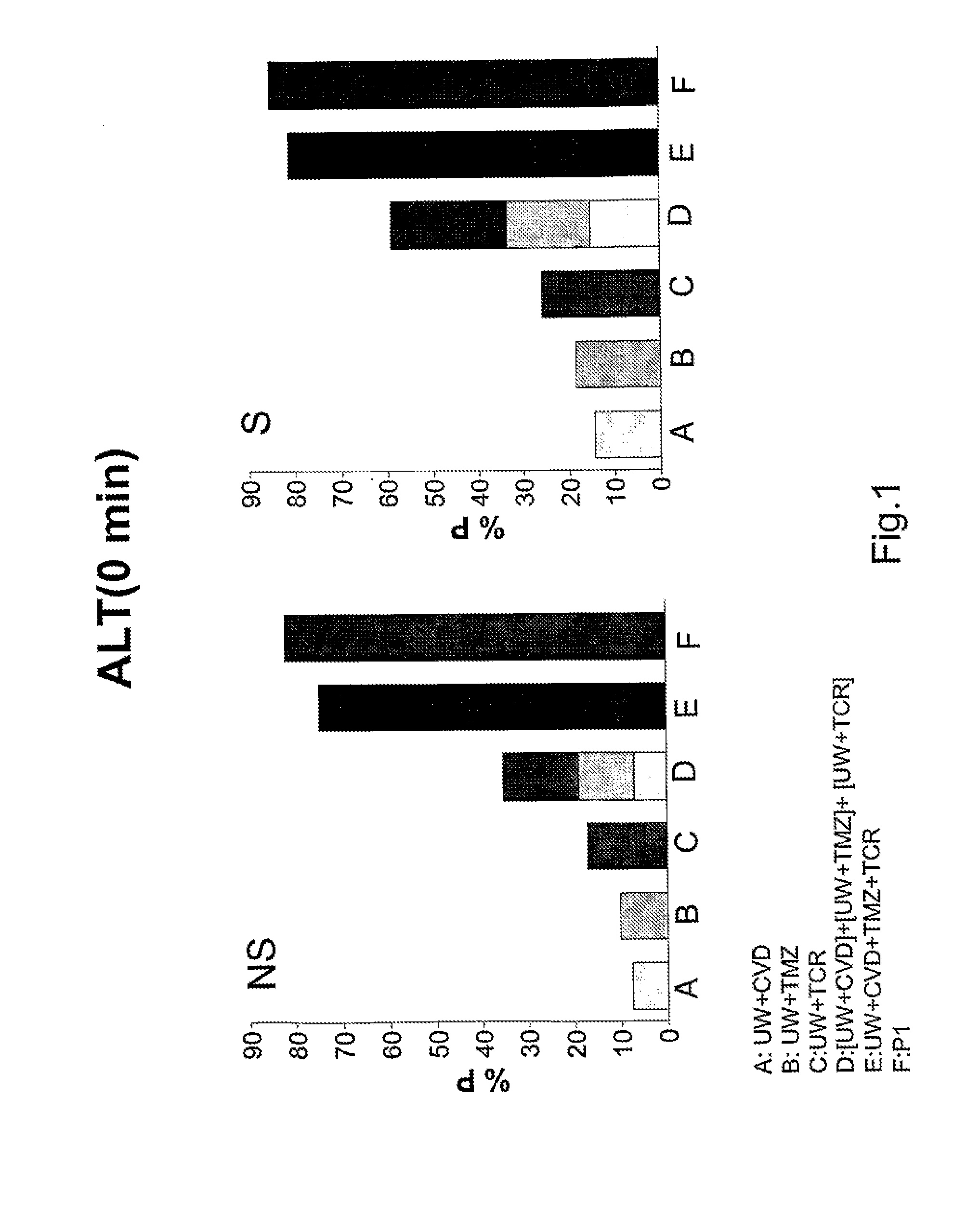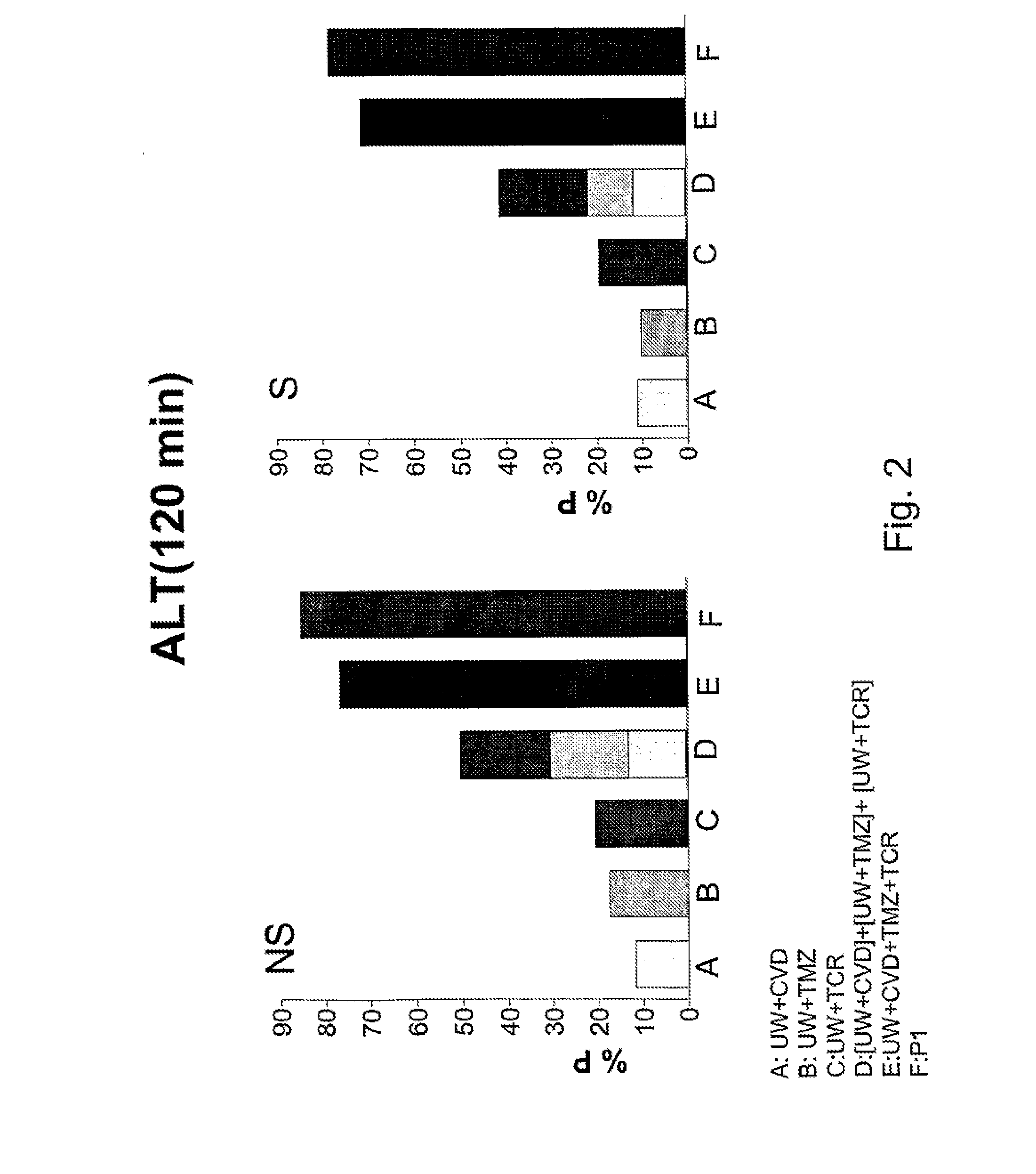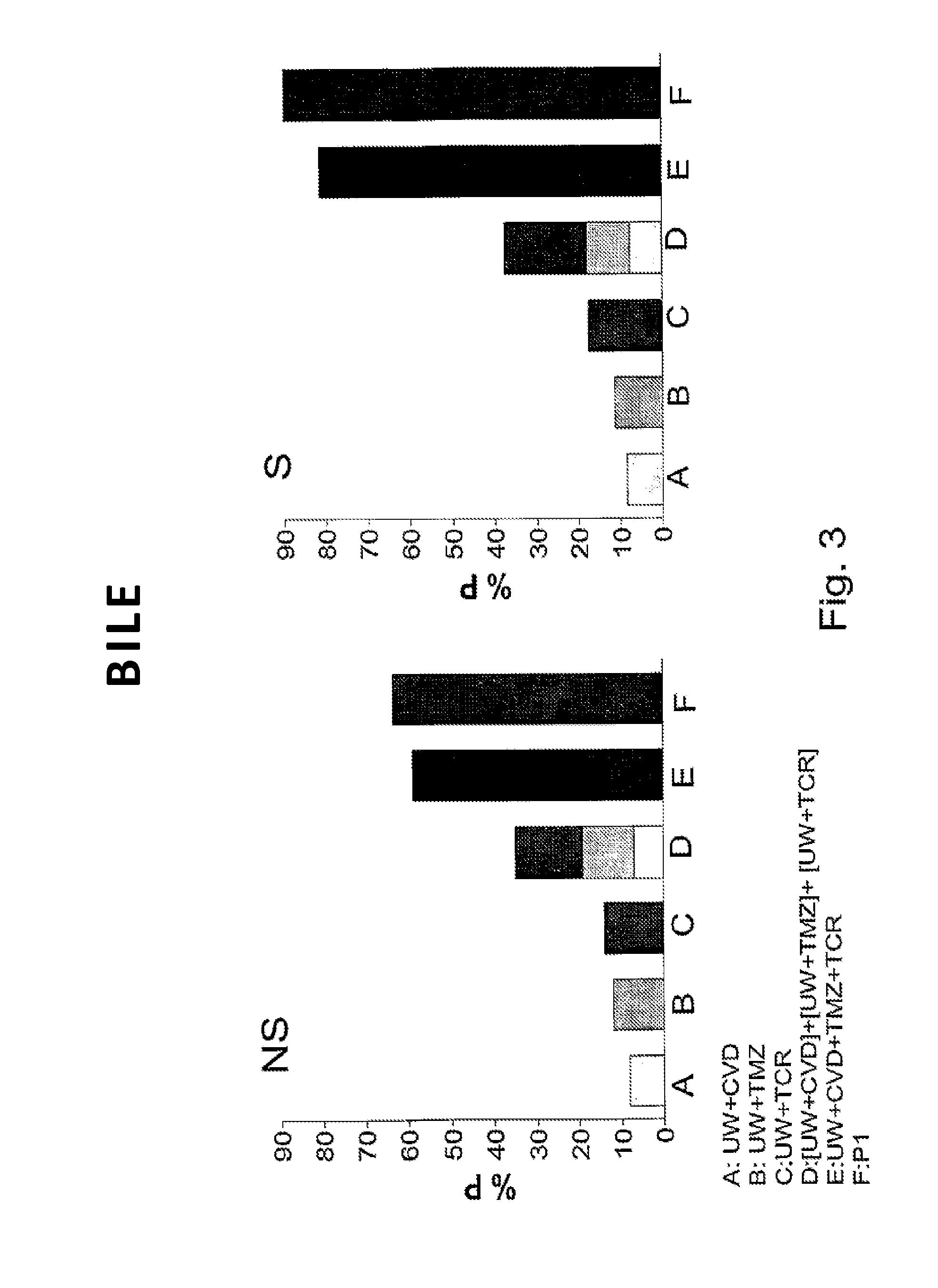Aqueous solution for the preservation of tissues and organs
a tissue and organ technology, applied in the field of tissues and organs, can solve the problems of unresolved injuries of grafts during ischemic period and subsequent reperfusion, increased risk of primary non-function or dysfunction of grafts after, and associated prolonged ischemia periods. , to achieve the effect of improving the initial condition, improving the preservation capacity of tissues, and increasing the amount of available organs
- Summary
- Abstract
- Description
- Claims
- Application Information
AI Technical Summary
Benefits of technology
Problems solved by technology
Method used
Image
Examples
example 1
Preparation of an Aqueous Preservation Solution
[0054]An aqueous solution, whose composition is shown in Table 1, was prepared according to the process disclosed below.
TABLE 1Concentration (mM)Lactobionic acid100H2PO4−25MgSO45Raffinose30PEG 350000.03Potassium ions40Sodium ions120Tacrolimus5 · 10−3Carvedilol10 · 10−3 Trimetazidine1 · 10−3
[0055]Step 1:
[0056]To a solution containing 1 g of dialysed polyethylene glycol (PEG 35.000), 4.11 mg of tacrolimus (TCR) were added and stirred to form a first solution.
[0057]Step 2:
[0058]35.83 g of lactobionic acid were added into a one litre receptacle containing 800 ml of water (distilled and deionized) at room temperature and stirred until dissolved. Then, 0.60 g of MgSO4, 22.5 mL of 5N NaOH, 6 mL of 5N KOH, 3.4 g of KH2PO4, and 17.83 g of raffinose were added to form a second solution. Subsequently, 1 mL of a solution containing TMZ from a stock solution (stock solution: 2.66 mg of TMZ dissolved in 10 ml of water) and 10 ml of CVD from a stock s...
example 2
[0061]In this example, the effect of the aqueous solution of the present invention on the liver in relation to the effect obtained when UW and IGL-1 preservation solutions were used was compared.
[0062]Hepatic injury and function were evaluated by measuring transaminases, bile production, hepatic clearance (% BSP) and ATP content.
[0063]To carry out the study, homozygous (obese, Ob) and heterozygous (lean, Ln) Zucker rats, aged 16-18 weeks, purchased from Iffa-Credo (L'Abresle, France), were used. An isolated perfused liver was used to evaluate hepatic injury and function, without the influence of other organs, plasma constituents and neuronal / hormonal effects. Hepatic architecture, microcirculation and bile production are preserved in this experimental model. This experimental model used has been considered in the literature as appropriated for testing the effectiveness of different preservation solutions for transplantation. All procedures were performed under isoflurane inhalation ...
PUM
| Property | Measurement | Unit |
|---|---|---|
| concentration | aaaaa | aaaaa |
| temperature | aaaaa | aaaaa |
| temperature | aaaaa | aaaaa |
Abstract
Description
Claims
Application Information
 Login to View More
Login to View More - R&D
- Intellectual Property
- Life Sciences
- Materials
- Tech Scout
- Unparalleled Data Quality
- Higher Quality Content
- 60% Fewer Hallucinations
Browse by: Latest US Patents, China's latest patents, Technical Efficacy Thesaurus, Application Domain, Technology Topic, Popular Technical Reports.
© 2025 PatSnap. All rights reserved.Legal|Privacy policy|Modern Slavery Act Transparency Statement|Sitemap|About US| Contact US: help@patsnap.com



